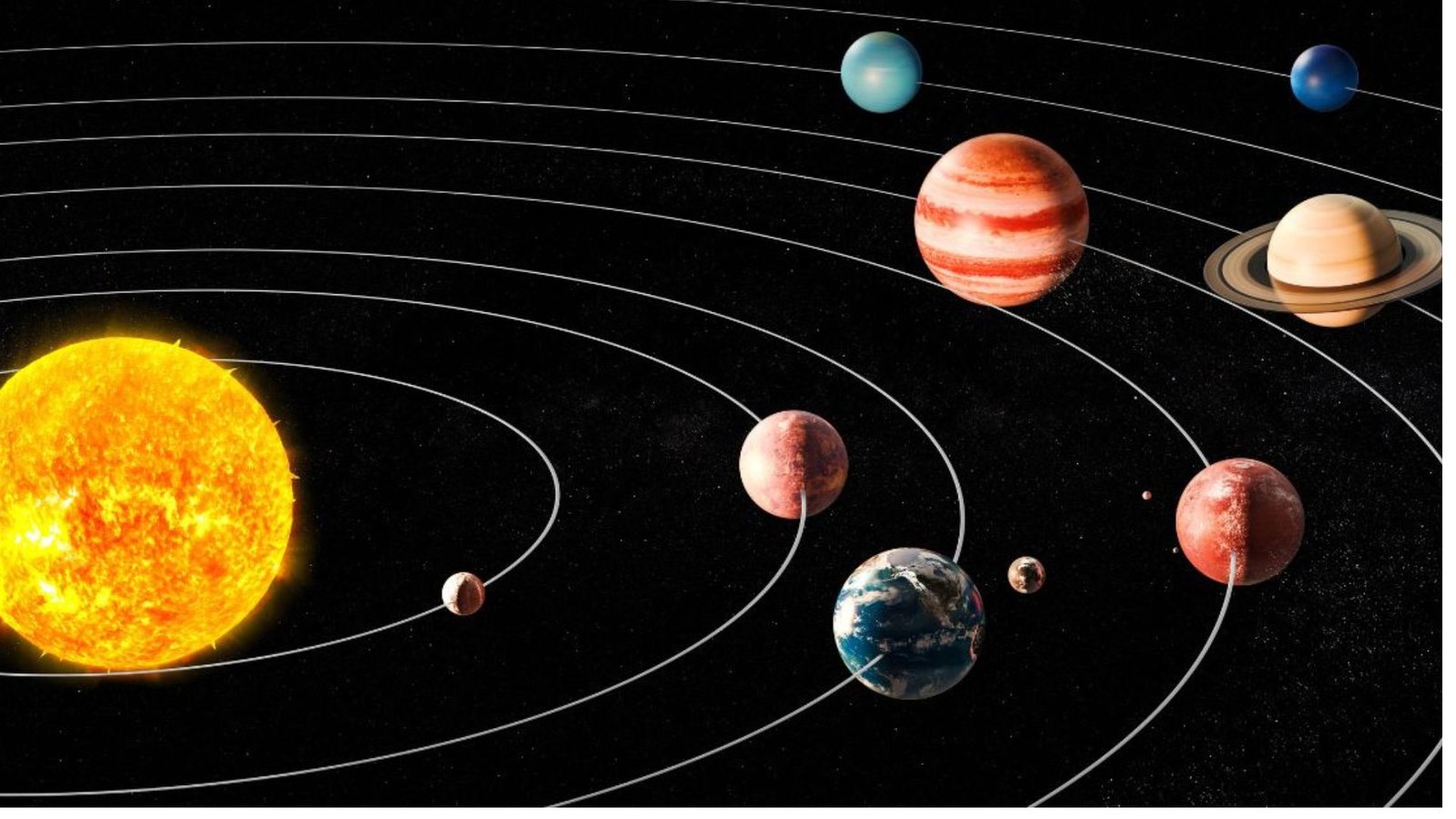The solar system is an exciting and vast place, filled with incredible planets, moons, and other fascinating celestial bodies. Teaching kids about the solar system can ignite their imagination and curiosity about space. With so many interesting facts and fun details to explore, it’s a great topic for young learners. This guide will help you introduce the solar system to your child with fun facts that will make them excited to learn more.

What is the Solar System?
The solar system is made up of the Sun, eight planets, their moons, dwarf planets, asteroids, comets, and other space objects. All of these orbit around the Sun, which is a star at the center of the solar system. The gravitational pull of the Sun keeps everything in place.
Fun Fact: Did you know that the Sun is so big that over one million Earths could fit inside it? It’s the largest object in our solar system!
The Eight Planets
There are eight planets in our solar system, each with its own unique characteristics. These planets are divided into two groups: terrestrial planets (rocky planets) and gas giants.
- Mercury: The smallest planet and the closest to the Sun. It’s so close that it only takes 88 Earth days to complete one orbit!
- Venus: Venus is known as Earth’s “sister planet” because it’s similar in size and composition, but it’s covered in thick clouds and has scorching temperatures.
- Earth: Our home! Earth is the only known planet with life, thanks to its water, atmosphere, and perfect distance from the Sun.
- Mars: Known as the “Red Planet” because of its reddish appearance, Mars is a cold, dry world with massive volcanoes and the largest canyon in the solar system.
- Jupiter: The largest planet in the solar system, Jupiter has a storm called the Great Red Spot that has been raging for hundreds of years!
- Saturn: Famous for its stunning rings, Saturn is the second-largest planet and is made mostly of gas and ice.
- Uranus: A blue-green planet with a unique tilt, Uranus spins on its side, making its day and night cycles very unusual.
- Neptune: The farthest planet from the Sun, Neptune is known for its intense winds and beautiful blue color due to the presence of methane in its atmosphere.
Moons of the Solar System
Many planets in the solar system have moons—small celestial bodies that orbit around them. Some planets, like Jupiter and Saturn, have dozens of moons!
- Earth has one moon, which we often call “the Moon.” It’s the fifth-largest moon in the solar system.
- Mars has two small moons called Phobos and Deimos.
- Jupiter has over 79 moons! One of its largest moons, Ganymede, is even bigger than the planet Mercury.
- Saturn has over 80 moons, including Titan, which is the second-largest moon in the solar system.
The Asteroid Belt
Between Mars and Jupiter lies the Asteroid Belt, a region filled with rocky objects known as asteroids. These asteroids are leftover pieces from the formation of the solar system. They vary in size, from small pebbles to large objects that are hundreds of kilometers across.
Fun Fact: The asteroid Ceres, located in the asteroid belt, is actually a dwarf planet! It’s the largest object in the belt and has even been visited by a NASA spacecraft.
Comets: The Solar System’s Snowballs
Comets are icy objects that travel through the solar system. When they get close to the Sun, the heat causes the ice to vaporize, creating a glowing tail of gas and dust. This makes comets one of the most beautiful sights in the sky.
Fun Fact: Comets have tails that always point away from the Sun, no matter which direction the comet is traveling! This happens because of the Sun’s solar wind.
Conclusion
The solar system is an incredible place, full of mysteries and wonders. From the planets and their moons to the distant reaches of the Kuiper Belt, there’s always something new to discover. Teaching your child about the solar system through fun facts and activities will spark their imagination and encourage them to learn more about space and science.










